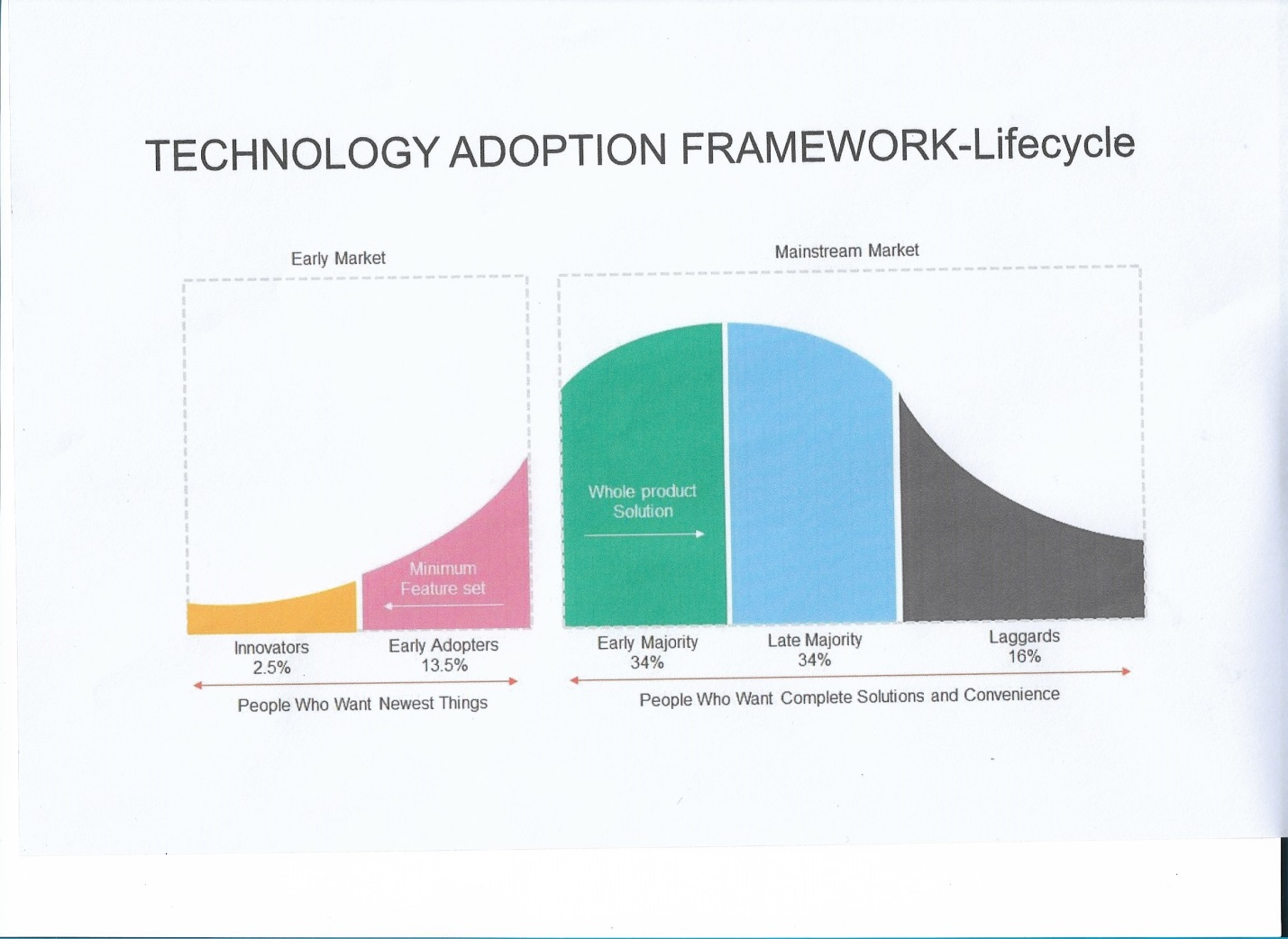Apple Inc. is an American tech company producing smartphones, tablets, personal computers, and other devices with a broad range of accessories for them. As a technological company, Apple is directly affected by the technology life cycle – a theoretical concept explaining the customers’ willingness to adopt new products based on individual preferences and the features available. Applying Technology Adoption Model to Apple’s business requires attention to customer loyalty, average product lifecycle, and the number of new elements in each particular product.
Before delving into the analysis, it is necessary to briefly cover Apple’s principal characteristics as a company. Founded in 1976, it originally focused on personal computers but broadened its range of products after the company’s founder Steve Jobs returned to the position of CEO in 1997 (Podolny and Hansen 2020). Since then, the company has grown in size and influence and offers a broad range of recognizable products, including iPhone smartphones, iPad tablets, Mac personal computers, and others. As of 2020, the company had more than 140,000 employees and reported a revenue of $274 million (Reuters, 2021). Uncharacteristically for its size, the company retains a functional rather than divisional structure, with its departments organized according to specific functions and no regional divisions (Podolny and Hansen 2020). Apple’s signature characteristics include an emphasis on innovation, a strong brand image, and high customer loyalty.
The Technology Adoption Model (Appendix 1) describes the lifecycle of a given technology. This model divides technologies and their target customer groups into five categories: innovators, early adopters, early majority, late majority, and laggards (Taherdoost, 2018). Innovators are eager to try out new things, even entailing risks, early adopters recognize the value of technology or product while it only has a basic feature set, and early majority together with late majority signify market saturation, leaving laggards to adopt the technology after everybody else (Gainsight, 2021). With respect to consumers, this model stresses the difference between those willing to experiment and those who want complete solutions.
When applying this model to Apple, one needs to keep in mind several things. First of all, Apple entered the smartphone market when the technology was already reaching its maturity, meaning that, as a company, it is an early adopter rather than an innovator (Kingsnorth, 2016). Admittedly, the company’s organizational culture puts an emphasis on innovation (Narayan and Ramu, 2018). Still, it did not pioneer smartphone or tablet technologies but, rather, focused on providing high-end options while shaping brand image as offering the most elite products (Wakabayashi, 2021). Secondly, while Apple makes a point of releasing a new generation of its signature products each year, their average lifecycle has already superseded four years (9tp5 Staff, 2019). It means that Apple’s customers grow more conservative, seeking complete solutions rather than innovation. In Apple’s case, the innovations that may mark the divide between innovators/early adopters and the early majority include new chipsets, new operational systems, and, given the importance of the App Store, the availability of applications for the newer ones (Chaffey and Smith, 2017). One needs to be aware of these factors when applying Technology Adoption Model to Apple.
In short, Apple as a tech company is a suitable case for the application of the Technology Adoption Model but has some peculiarities in this respect. Despite the focus on innovation in its organization and culture, the company itself is more of a successful early adopter rather than an innovator. Moreover, the lengthening lifecycle of the company’s products suggests that its customer base grows more conservative and prefers complete solutions. It may be a reflection of the fact that Apple’s insistence on launching new series of its signature products each year relies on customer loyalty rather than groundbreaking innovations.
Appendix 1

Reference List
9tp5 Staff. (2019). Analyst: average iPhone upgrade cycle now lasts four years, up from three in 2018.
Chaffey, D. and Smith, P. R. (2017). Digital marketing excellence: planning, optimizing, and integrating online marketing. 5th edn. London: Routledge.
Gainsight. (2021). Technology adoption lifecycle.
Kingsnorth, S. (2016). Digital marketing strategy: an integrated approach to online marketing. 2nd edn. London: Kogan Page.
Podolny, J. M., and Hansen. M.T. (2020). ‘How Apple is organized for innovation.’ Harvard Business Review, 98(6).
Reuters. (2021). Applc Inc.
Taherdoost, H. (2018). ‘A review of technology acceptance and adoption models and theories.’ Procedia Manufacturing, 22, 960-967.
Wakabayashi, D. ‘Apple’s most back-ordered new product is not what you expect.’ The New York Times.